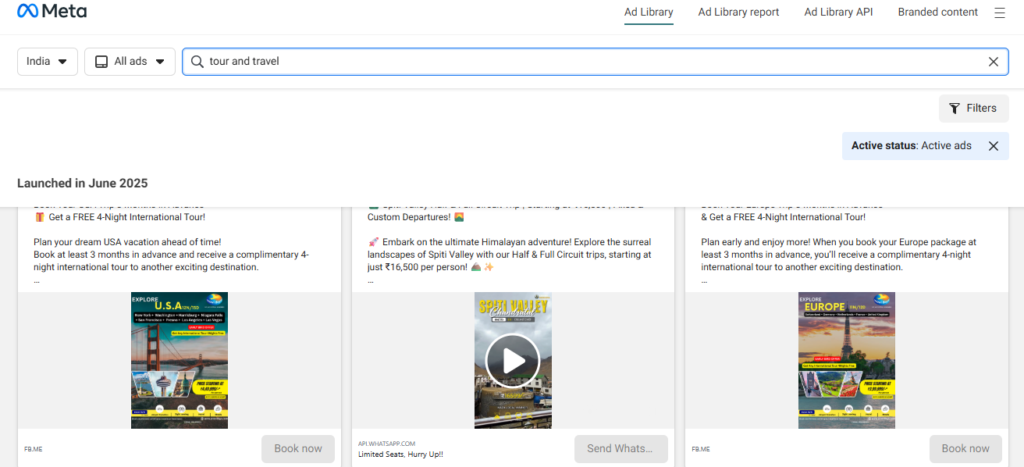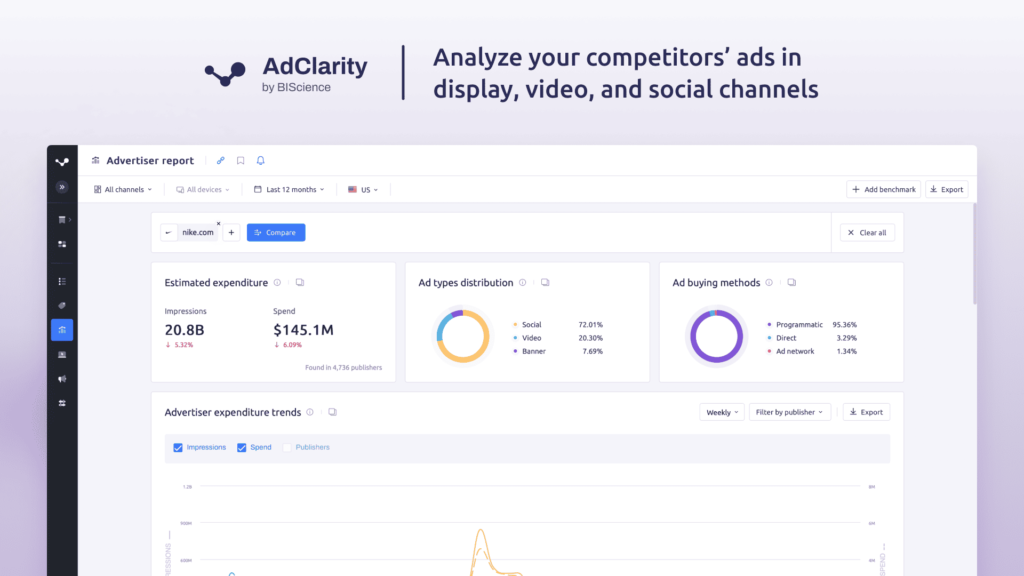
26 Jun 2025
How to Check Your Competitor’s Facebook Ads
In digital marketing, knowing what your competitors are doing is not about imitating their every move; it’s about outsmarting them. And, thanks to platform transparency, there’s no need to guess anymore. It’s shockingly easy to see your competition’s live ads on Facebook — and gain a glimpse into their messaging, creativity, and campaign priorities.
Knowing what others in your niche are promoting keeps you informed and sharp. It enables you to benchmark your strategy, identify overlooked opportunities, and develop more brilliant campaigns — all without losing valuable time and budget on ones that might just flop. In this guide, we will discuss specifically how to find these ads, what to look out for, and how to turn that information into action.
Check Out What’s Live With Facebook Ad Library
One of the easiest ways to look up competitor ads is by using Meta’s Facebook Ad Library. It’s free, public, and no login or subscription is required.
You can head to Facebook.com/ads/library, click on your region, and typing in your competitor’s page name. You’ll see every ad that page is currently running anywhere on Facebook or Instagram — including visual, ad copy, and start date.

You won’t be able to view how much they’re spending or how the ad is performing, but you can guess their performance by seeing how long an ad has been running. If it has been out for a few weeks or months and is still happening, the chances are that it’s effective.
What makes the Ad Library particularly valuable is its creative context. You’re not just reading words — you’re reading precisely how your competitor communicates visually, emotionally, and persuasively. Are they focusing on product images or end-user benefits? Are they going with a static image or a video? Do their ads seem polished, urgent, and personal?
Supercharge Your Research with Sem rush Ad Clarity
If you want to do more than gather surface-level observations, tools such as the Sem rush Ad Clarity can provide in-depth competitive intelligence. It’s a paid feature, but the level of detail it provides can give you a beneficial advantage.

With AdClarity, you can: Search competitor domains to see the estimated amount of ad spending, impressions, platform specialization, and how well the campaign performs as it evolves. You can filter ads by platform — Facebook, Instagram, or YouTube — and dive deeper into their best-performing creatives.
What makes it stand out (the picks here) is its capability to track campaign time. If spending for a brand suddenly shoots up in April, that might signal a seasonal launch or product drop, or a time-sensitive campaign. That kind of visibility can let you plan smarter, time your promotions more strategically and avoid launching in oversaturated windows.
You also get to see creatives in their native format. That’s because you’re not just learning what they’re telling you, but also learning how they’re telling you, and where those messages appear on their customer journey.
What to See in Competitor Ads
Just seeing an ad isn’t the point. The true worth is in understanding the strategy. Begin by examining the message. Is the ad led by the product, the solution or the emotion? Some offer convenience, some value or prestige. These themes provide you with hints about what matters most to their audience.
And then add in format and design. Are they using video, are they using static images, are they using carousels? Is the tone more professional, playful or casual? Notice what they’ve decided to say on their forms, how their form looks and what their call-to-action language is. Are they prompting you to “Learn More,” “Shop Now” or “Start Free Trial”? That seemingly small difference can tell you a great deal about what campaigns are trying to accomplish.
You’re not just looking for what’s on a scene or a photograph, but what’s not there. Oftentimes, tone, visual style, or placement gaps indicate where you can make your brand stand out.
Translating Observations Into Strategy
As soon as you know what your competitors say about what they make, it’s time to brainstorm ways that set you apart.
If everyone in your space constantly talks about discounts, you may focus on durability, say, or exclusivity. If everyone is focusing on posting sharp, shiny product images, try something raw or community-led instead. The goal is to deliberately find unique ideas that make you stand out in a way that aligns with your value proposition. You may also base your campaign structure upon theirs. Suppose you notice that a certain brand is increasing its spend on Instagram video for lead generation, and you’ve been exclusively testing static images in the Facebook Feed. In that case, that’s a data-driven reason to adjust the mix of your own media.
Stay Informed, Not Reactive
Competitive research isn’t about following every trend. It means being sufficiently informed to respond, not just react.
When you monitor competitor ads on an ongoing basis, you wind up with far more than just ideas. You gain context: what the industry is paying attention to, how buyers are being addressed, and where the crowd is most concentrated. That gives your team the space to think more clearly, create more freely, and spend more purposefully.
Leveraging Competitor Ad Insights for Your Brand
Competitive analysis is not new — but what’s new is how easy and accessible it has become. Tools like Meta’s Ad Library and Semrush AdClarity mean you can see the precise ads your competition is currently spending money on. And when you observe and discern them closely, you start to see the market not as noise to defeat but as a map to guide you.
With some understanding and the proper interpretation, you’re not just watching campaigns; you’re building better ones.
Also Read:- 4 Ps of marketing
Leave a Reply
Your email address will not be published. Required fields are marked *












Comments